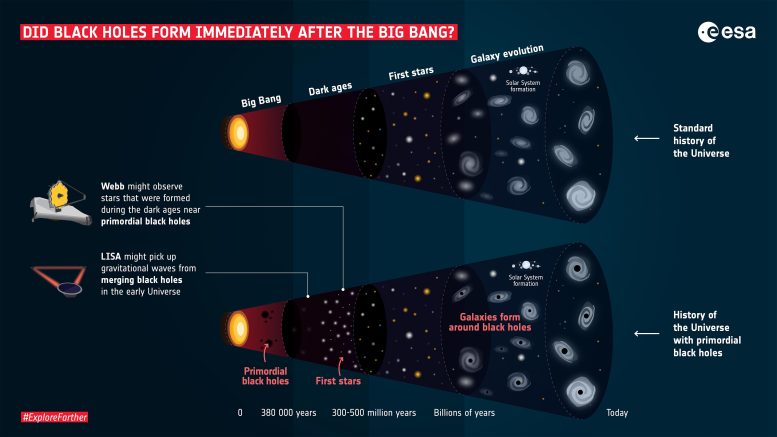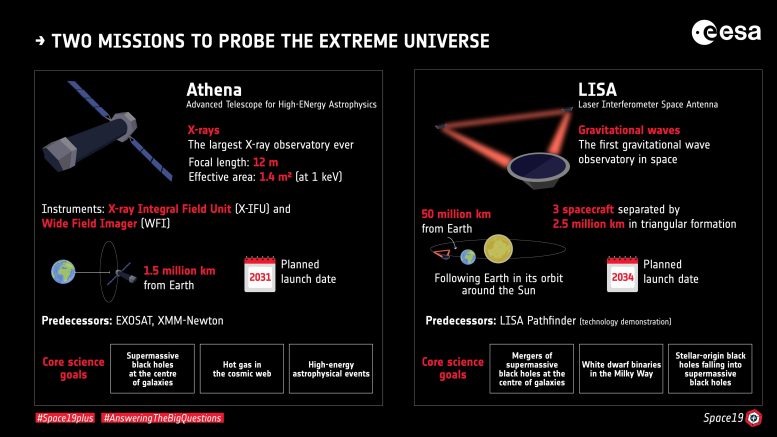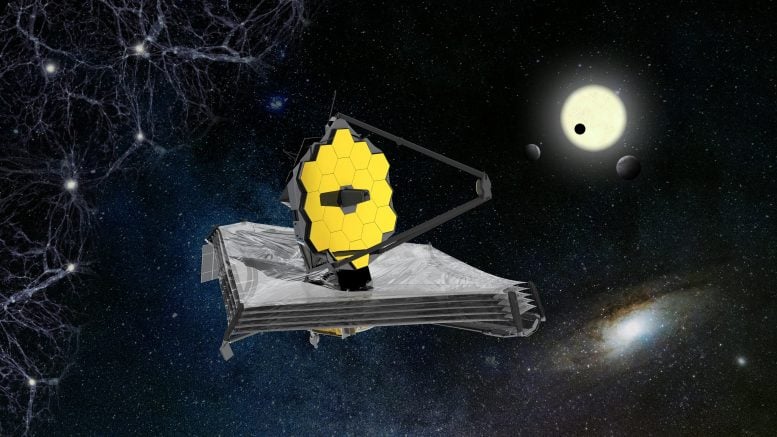Black Holes Could Be Dark Matter – And May Have Existed Since the Beginning of the Universe
How did supermassive black holes form? What is dark matter? In an alternative model for how the Universe came to be, as compared to the ‘textbook’ history of the Universe, a team of astronomers propose that both of these cosmic mysteries could be explained by so-called ‘primordial black holes’. In the graphic, the focus is on comparing the timing of the appearance of the first black holes and stars, and is not meant to imply there are no black holes considered in the standard model. Credit: ESA
Did black holes form immediately after the Big Bang?
How did supermassive black holes form? What is dark matter? In an alternative model for how the Universe came to be, as compared to the ‘textbook’ history of the Universe, a team of astronomers propose that both of these cosmic mysteries could be explained by so-called ‘primordial black holes’.
Nico Cappelluti (University of Miami), Günther Hasinger (ESA Science Director) and Priyamvada Natarajan (Yale University), suggest that black holes existed since the beginning of the Universe and that these primordial black holes could themselves be the as-of-yet unexplained dark matter. The new study is accepted for publication in The Astrophysical Journal.
“Black holes of different sizes are still a mystery. We don’t understand how supermassive black holes could have grown so huge in the relatively short time available since the Universe existed,” explains Günther Hasinger.
At the other end of the scale, there might also be very small black holes, as suggested by observations from ESA’s Gaia, for example. If they exist, they are too small to have formed from dying stars.
“Our study shows that without introducing new particles or new physics, we can solve mysteries of modern cosmology from the nature of dark matter itself to the origin of super-massive black holes,” says Nico Cappelluti.
Two future missions in ESA’s space science program will investigate some of the most extreme phenomena in the Universe: Athena, the Advanced Telescope for High-ENergy Astrophysics, and LISA, the Laser Interferometer Space Antenna. Currently in the study phase, both missions are scheduled for launch in the early 2030s. Athena will be the largest X-ray observatory ever built, investigating some of the hottest and most energetic phenomena in the cosmos with unprecedented accuracy and depth. Meanwhile, LISA will be the first space-borne observatory of gravitational waves – fluctuations in the fabric of spacetime produced by the acceleration of cosmic objects with very strong gravity fields, like pairs of merging black holes. Credit: ESA – S. Poletti
If most of the black holes formed immediately after the Big Bang, they could have started merging in the early Universe, forming more and more massive black holes over time. ESA’s future gravitational wave space observatory, LISA, might pick up the signals of those mergers if primordial black holes exist. Small black holes might simply be the primordial black holes that have not merged into larger ones yet.
According to this model, the Universe would be filled with black holes all over. Stars would start to form around these clumps of ‘dark matter’, creating solar systems and galaxies over billions of years. If the first stars indeed formed around primordial black holes, they would exist earlier in the Universe than is expected by the ‘standard’ model.
The James Webb Space Telescope is a space observatory to see further into the Universe than ever before. It is designed to answer outstanding questions about the Universe and to make breakthrough discoveries in all fields of astronomy. Webb will observe the Universe’s first galaxies, reveal the birth of stars and planets, and look for exoplanets with the potential for life. Credit: ESA/ATG medialab
“Primordial black holes, if they do exist, could well be the seeds from which all black holes form, including the one at the center of the Milky Way,” says Priyamvada Natarajan.
ESA’s Euclid mission, which will probe the dark Universe in greater detail than ever before, could play a role in the quest to identify primordial black holes as dark matter candidates.
The upcoming NASA/ESA/CSA James Webb Space Telescope, a cosmic time machine looking back over more than 13 billion years, will further shed light on this mystery.
“If the first stars and galaxies already formed in the so-called ‘dark ages’, Webb should be able to see evidence of them,” adds Günther.
Reference: “Exploring the high-redshift PBH-ΛCDM Universe: early black hole seeding, the first stars and cosmic radiation backgrounds” by N. Cappelluti, G. Hasinger and P. Natarajan, Accepted, The Astrophysical Journal.
from scitechdaily 16/12/2021



Δεν υπάρχουν σχόλια:
Δημοσίευση σχολίου